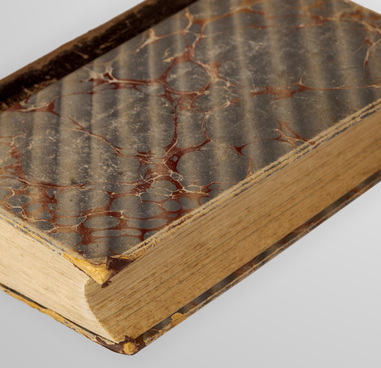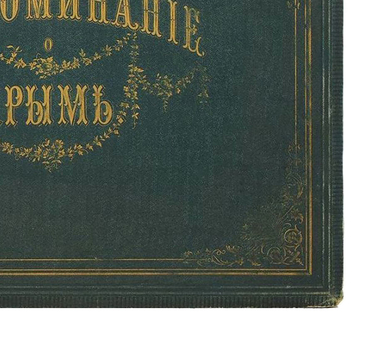The family of the last Russian Emperor Nicholas II was devoutly religious. The imperial chambers were home not only to numerous icons, but also many reproductions and lithographs on religious themes. One of these works was a color reproduction of “The Crucifixion” — a 1496 fresco by the Italian artist Pietro Perugino.
Perugino’s “Crucifixion” is not so much a portrayal of mourning, but rather of pure, genuine faith in the Resurrection. There is no pathos in the way the characters display grief — only quiet, peaceful sadness. Everything that was supposed to happen has already happened. The spilled blood turned into flowers blooming at the foot of the cross.
“Crucifixion” is a triptych: Christ on the Cross is in the center with Mary Magdalene kneeling beside him, the section on the right shows John the Apostle and St. Benedict, and the one on the left — the Virgin Mary and St. Bernard. A hilly landscape serves as a background to all three sections of the triptych. This exquisitely refined and melancholic landscape is present in almost all of Perugino’s works, with glowing mists, high and clear skies, a dense blue of dewy valleys spreading in all directions and going beyond the horizon. Far in the distance, the outlines of hills dissolve in a light haze, communicating a sense of infinity.
Master of the Umbrian school, Perugino was influenced by Piero della Francesca, Luca Signorelli, the Dutch artists, as well as Andrea del Verrocchio, in whose studio in Florence he worked since 1470. Perugino lived in Perugia, Rome, Florence, Venice, Siena and other Italian cities. The artist’s paintings stand out for the smoothness of compositional rhythms, the lyricism of the background landscapes depicting hilly landscapes of Umbria. Having received considerable fame, he was called to Rome, where he, on behalf of Pope Sixtus IV, painted frescoes on the walls of the Sistine Chapel in Vatican City (1478–1482). Later, in 1536, most of these murals were destroyed to make way for Michelangelo’s “Last Judgment.”
Having creatively assimilated diverse influences, Renaissance genius Perugino developed his own style, full of deeply felt, peaceful harmony.
Perugino’s “Crucifixion” is not so much a portrayal of mourning, but rather of pure, genuine faith in the Resurrection. There is no pathos in the way the characters display grief — only quiet, peaceful sadness. Everything that was supposed to happen has already happened. The spilled blood turned into flowers blooming at the foot of the cross.
“Crucifixion” is a triptych: Christ on the Cross is in the center with Mary Magdalene kneeling beside him, the section on the right shows John the Apostle and St. Benedict, and the one on the left — the Virgin Mary and St. Bernard. A hilly landscape serves as a background to all three sections of the triptych. This exquisitely refined and melancholic landscape is present in almost all of Perugino’s works, with glowing mists, high and clear skies, a dense blue of dewy valleys spreading in all directions and going beyond the horizon. Far in the distance, the outlines of hills dissolve in a light haze, communicating a sense of infinity.
Master of the Umbrian school, Perugino was influenced by Piero della Francesca, Luca Signorelli, the Dutch artists, as well as Andrea del Verrocchio, in whose studio in Florence he worked since 1470. Perugino lived in Perugia, Rome, Florence, Venice, Siena and other Italian cities. The artist’s paintings stand out for the smoothness of compositional rhythms, the lyricism of the background landscapes depicting hilly landscapes of Umbria. Having received considerable fame, he was called to Rome, where he, on behalf of Pope Sixtus IV, painted frescoes on the walls of the Sistine Chapel in Vatican City (1478–1482). Later, in 1536, most of these murals were destroyed to make way for Michelangelo’s “Last Judgment.”
Having creatively assimilated diverse influences, Renaissance genius Perugino developed his own style, full of deeply felt, peaceful harmony.



